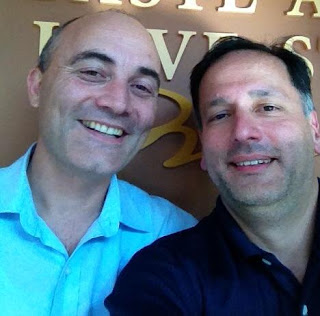For many people, speaking to a large audience is a cause for fear and anxiety. Over the years, I've developed a passion for sharing my thoughts, concepts and experiences through public speaking to anyone willing to listen as I truly believe that I have 'ideas worth spreading'. I was introduced to TED.com by a good friend in 2009. I became an instant fan of these "riveting talks by remarkable people, free to the world" whose mission is simply in spreading ideas.
You can imagine my delight when I was invited to speak at the TEDx Macquarie University event (#TEDxMacUni) in Sydney in August 2012. As a self-described Connector, the 'No Boundaries' theme is a perfect match for my favorite topic - connection. The challenge of presenting my ideas in a compelling way in under 18 minutes to both a live and online audience can only be described as the most honorable thrill.
The other bonus of attending the event is sharing the stage with a smart and eclectic group of speakers including the vivacious Internet chef, Bridget Davis and the inspirational Tim Noonan. I can't wait.
If you happen to be in Sydney on Saturday, 18th August, the organizers have generously made available an exclusive offer for readers of this blog to purchase tickets to the main event and the cocktail evening post-event, for 14% off the ticket price.
To take advantage of this offer which expires on Friday, 10th August 2012 and limited to 50 tickets, use promotional code TEDXMUBLOG upon registration.
The other bonus of attending the event is sharing the stage with a smart and eclectic group of speakers including the vivacious Internet chef, Bridget Davis and the inspirational Tim Noonan. I can't wait.
If you happen to be in Sydney on Saturday, 18th August, the organizers have generously made available an exclusive offer for readers of this blog to purchase tickets to the main event and the cocktail evening post-event, for 14% off the ticket price.
To take advantage of this offer which expires on Friday, 10th August 2012 and limited to 50 tickets, use promotional code TEDXMUBLOG upon registration.





